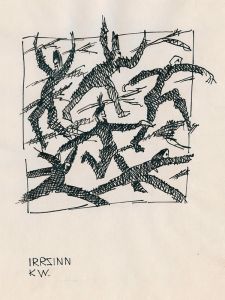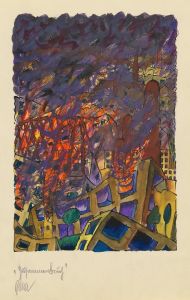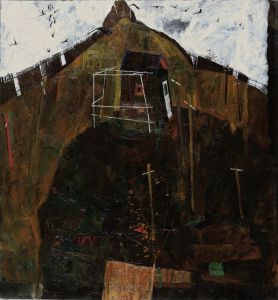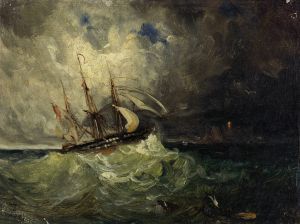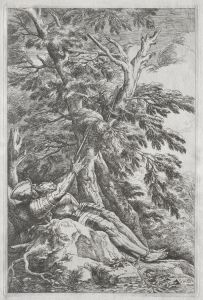
The Fall of the Giants
A hand-painted replica of Salvator Rosa’s masterpiece The Fall of the Giants, meticulously crafted by professional artists to capture the true essence of the original. Each piece is created with museum-quality canvas and rare mineral pigments, carefully painted by experienced artists with delicate brushstrokes and rich, layered colors to perfectly recreate the texture of the original artwork. Unlike machine-printed reproductions, this hand-painted version brings the painting to life, infused with the artist’s emotions and skill in every stroke. Whether for personal collection or home decoration, it instantly elevates the artistic atmosphere of any space.
Salvator Rosa's The Fall of the Giants is a dramatic Baroque painting that depicts the mythological story of the Giants' rebellion against the Olympian gods, as described in ancient Greco-Roman mythology. The work is believed to have been created in the mid-17th century, during Rosa's mature period as an artist. Known for his dynamic and often tumultuous compositions, Rosa brings his characteristic sense of drama and movement to this large-scale work.
The painting illustrates the moment when the Olympian gods, led by Zeus (Jupiter in Roman mythology), defeat the Giants, who had attempted to overthrow them by stacking mountains to reach Mount Olympus. In the scene, the Giants are shown in chaotic disarray, crushed under the collapsing mountains and struck down by the gods' divine power. Rosa's use of chiaroscuro—contrasting light and shadow—heightens the tension and drama of the composition, emphasizing the catastrophic downfall of the rebellious figures.
Salvator Rosa was an Italian painter, poet, and printmaker, known for his unconventional and often rebellious approach to art. He was associated with the Baroque movement, which emphasized emotion, movement, and grandeur. Rosa's works frequently explored themes of nature's power, human folly, and the sublime, and The Fall of the Giants is no exception. The painting reflects his interest in dramatic narratives and his ability to convey a sense of awe and terror.
While Rosa's exact inspiration for this painting is not definitively documented, the subject of the Giants' fall was a popular theme in Baroque art, as it allowed artists to showcase their skill in depicting complex compositions filled with dynamic figures and dramatic action. Rosa's interpretation stands out for its dark, almost apocalyptic tone, which aligns with his reputation for creating works that challenge traditional aesthetic norms.
The current location of The Fall of the Giants is not universally agreed upon, as several works by Rosa with similar themes exist, and some have been attributed to his followers or imitators. However, Rosa's influence on the depiction of mythological and dramatic subjects in art remains significant, and this painting is often cited as an example of his mastery in combining narrative intensity with technical skill.
Due to limited documentation, further details about the commission, patronage, or specific historical context of The Fall of the Giants remain unclear. Rosa's broader body of work, however, continues to be studied and celebrated for its originality and emotional depth.





